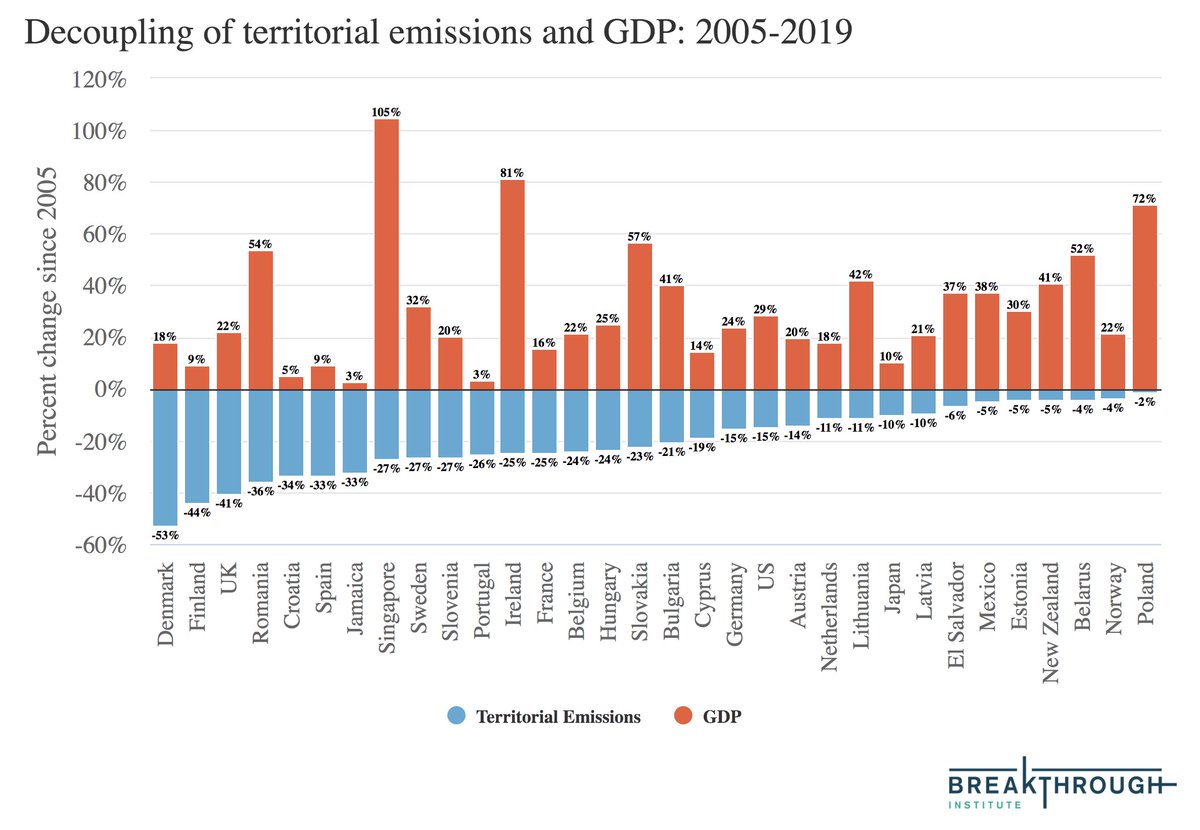
Last week the folks at @SwissRe released a report suggesting global losses of up to 14% of global GDP by 2050 due to warming expected in a current policy world.
Unfortunately, the way they use climate models is a bit problematic: swissre.com/institute/rese…
A thread: 1/13
Unfortunately, the way they use climate models is a bit problematic: swissre.com/institute/rese…
A thread: 1/13
First, credit where credit is due. The report focused on the RCP4.5 scenario in line with current policy projections from folks like @climateactiontr rather than the increasingly implausible RCP8.5 pathway: 2/ 

However, they then suggest that 2050 temperature outcomes under RCP4.5 would likely be 2C (50th percentile) to 2.6C (95th percentile) based on climate models used in the IPCC 5th Assessment Report. Its here that the problem arises. 3/
The world is currently warming at around 0.2C per decade, and has warmed about 1.3C since preindustrial. If that warming rate continues – which would be a reasonable assumption under a RCP4.5 world of relatively flat future emissions – we would end up at ~1.9C by 2100. 4/
Of course, there are real uncertainties in future warming due to climate and carbon cycle feedbacks, as well as natural variability. These will play more of a role the further out you go, but will add some uncertainty over the next 30 years. 5/
Now, the problem with the @SwissRe approach is this: they are basing their analysis on the range of warming that models project since the early 1800s, not the additional warming that is expected to occur over the next 30 years relative to today. 6/
Here are the CMIP5 RCP4.5 model runs as published in the IPCC AR5. The figure below shows warming relative to the late 1800s (specifically 1861-1899): 7/ 

The issue here is the huge range of warming that models already project by 2020; while the average model projects warming of 1.3C in line with what actually happened, there is a wide range from 0.8C to 1.9C warming in 2020 relative to 1861-1899. 8/
If we look at the year 2050, we see a range similar to the one Swiss Re quotes; with the 50th percentile of all the models showing around 2C warming and the 95th percentile showing around 2.5C warming. 9/
However, those models showing 2.5C or more warming in 2050 suggest that the world has already warmed by 1.7C+ in 2020, which is clearly not the case. There is no CMIP5 model that shows the world warming by an additional 1.3C (2.3C in 2050 - 1.3C in 2020) in the next 30 years. 10/
An alternative approach is to look at the additional warming in each relative to today – rather than the warming in each model relative to the late 1800s. This figure shows additional warming in RCP4.5 compared to observations from HadCRUT5: 11/ 

This avoids baking in historical mismatches, and provides a better estimate of the range of plausible near-term warming given where we are today. This approach shows the same 50th percentile warming estimate (2C), but has a 95th percentile of 2.3C instead of 2.5C. 12/
This would not fundamentally change the takeaway of the @SwissRe analysis; if we have a 10% GDP loss at 2C and a 14% loss at 2.6C, than 2.3C is not a good outcome. But it is important that we use observations of what has really happened to inform our near-term projections! 13/13
Sorry, 1.9C by 2050! Oh for want of a twitter edit button...
• • •
Missing some Tweet in this thread? You can try to
force a refresh












